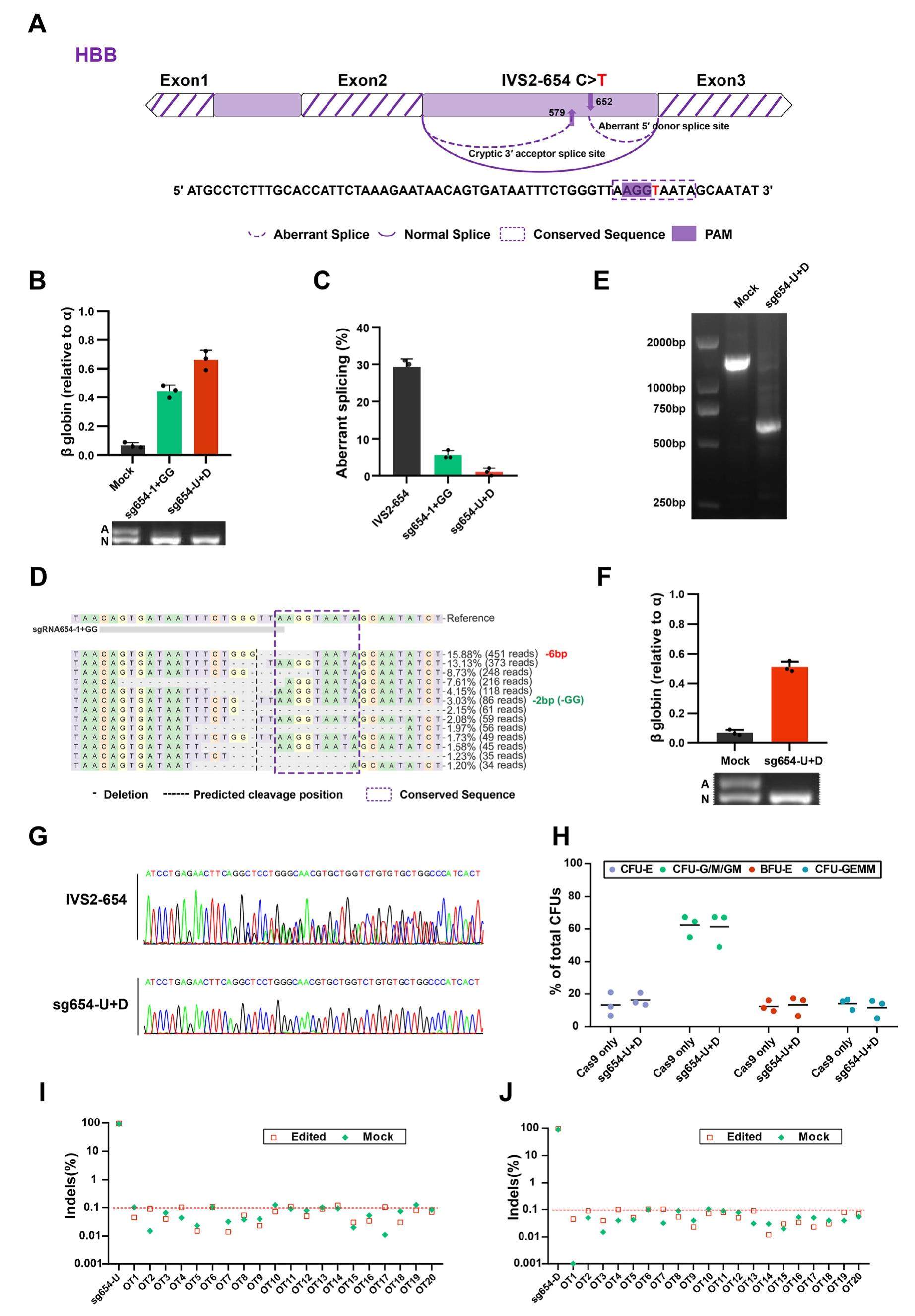
Therapeutic genome editing of an aberrant splice site in β-thalassemia by CRISPR/Cas9 with multiple sgRNAs


Genetic mutations cause aberrant splicing, one of the important molecular mechanisms in human diseases. IVS2-654, a mutation causing aberrant splicing of b-globin premRNA and contributing to β-globin deficiency, is one of the most common diseases in Southeast Asia and China. In our previous work, we found a TTTV protospacer adjacent motif (PAM) by the Cas12a system and the editing efficiency of IVS2-654 C > T achieving 76.7%. Here, we present that the efficiency and persistence of IVS2-654 C > T can be rescued through electroporation of Cas9 ribonucleoprotein (RNPs) with multiple single guide RNAs (sgRNAs) into hematopoietic stem and progenitor cells (HSPCs), introducing high-efficiency indels of pre-mRNA with the aberrant splice sites disrupted and restoring normal β-globin expression. Notably, we found those multiple adjacent sgRNAs could induce large fragment deletion rather than regular small indels, leading to normal coding sequence (CDS) region and directly restoring the β-globin gene function of IVS2-654 C > T without off-target effects. Our strategies could directly rescue the β-globin gene function of IVS2-654 C > T with a higher restoration by multiple sgRNAs co-delivered.
